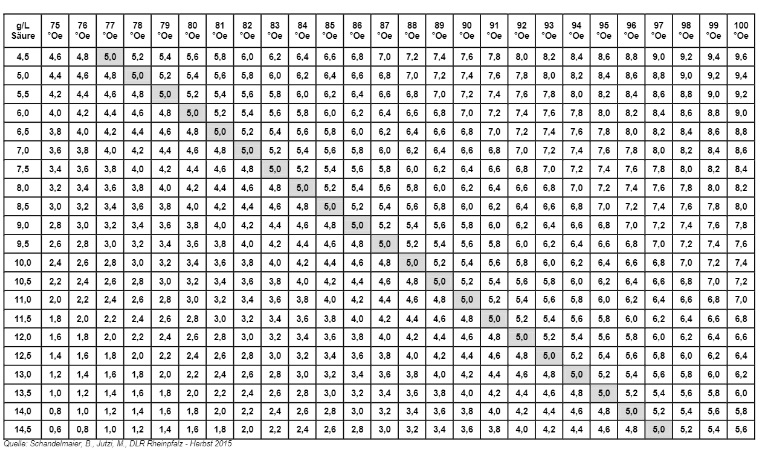Determine the residual sugar in wine with EasyDens & Wine Meister app

Residual sugar in wine is an important metric for many winemakers - especially in the EU. The amount of residual sugar influences the sweetness of a wine, and in the EU the content of residual sugar is tied to certain labelling terms. With the EasyDens Digital Density Meter and the Wine Meister app, residual sugar can be determined automatically using two simple formulas.
We explain exactly how this works in this article.
In vino veritas
Wine is one of the oldest alcoholic drinks with a long history. Archaeological finds show that people already began to collect seeds and grow vines about 8,000 BC. The origin of wine was probably in the Near East. Since then, the technology for making wine has continued to be refined and improved.
Depending on which wine you make, the production process differs. When producing white wine, for example, only pure grape juice is used, while when producing red wine, the pulp, peel and seeds remain in the juice, which also creates the red color of the wine.
The grape juice is then fermented, with yeast bacteria converting the sugar contained in the wine into alcohol. At the end of fermentation, the wine obtained consists of sugar, alcohol, acid, phenols and possibly tannins.
You can find more information about fermentation tracking here.
Sweet, sweeter the sweetest - sugar plays an important role in winemaking
During fermentation, the yeast converts the natural sugar (glucose and fructose) contained in grape juice into alcohol and carbon dioxide. The more sugar you have in your grapes and grape juice, the more can be fermented into alcohol. The amount of fermentable sugar in the grapes determines the alcohol content at the end of fermentation, but also the remaining residual sugar.
What is residual sugar?
Residual sugar or residual sweetness, measured in grams per liter (g/L), is the amount of sugar in the wine that is achieved by a natural end of fermentation or by a targeted stop. Winemakers can stop fermentation at any point to produce sweeter wine than would be achieved by naturally stopping. To stop the fermentation the yeast is removed, killed or at least very strongly inhibited in its activity using various methods or means.
The residual sugar is responsible for the sweetness of the wine. The more residual sugar in the wine, the sweeter it is. The residual sugar is indicated on the label like:
- Dry: up to 4 g/L
- Semi-dry: up to 18 g/L
- Medium sweet: up to 45 g/L
- Sweet: above 45 g/L
How can you determine the residual sugar?
In a sample like fermenting or finished wine, which contains several components such as sugar, alcohol, water, acids, etc., density measurement can no longer be used to directly determine the sugar content because sugar and alcohol have different effects on density.
Although the density cannot be used to measure the exact residual sugar value, calculations can be performed to calculate the approximate residual sugar content and thus provide an indication of how much sugar is still present.
The Wine Meister mobile app offers two calculators for the determination of residual sugar in white wine: you can select between a simple and an advanced calculation.
For both calculations, it is always important to know the density of the original must weight, the total acid value and the temperature.

Fig.1: Schandelmaier table
You can import the density value measured with the EasyDens directly into the calculator or enter the density and temperature values manually.
For the simple calculation enter density, temperature and the correction factor of the current must weight. The preset correction factor 5 is well-suited for most standard white wines. To determine the exact correction factor required for your special wine, use the Schandelmaier table (see Fig. 1).
For the Schandelmaier table you need the °Oe value of the current must weight. You can either have this value displayed when measuring with EasyDens or simply calculate it manually from your density value.

For the advanced calculation enter the density and temperature of the original must weight as well as the density, temperature and total acid of the current must weight.

All further calculations are done automatically by Wine Meister mobile app.





